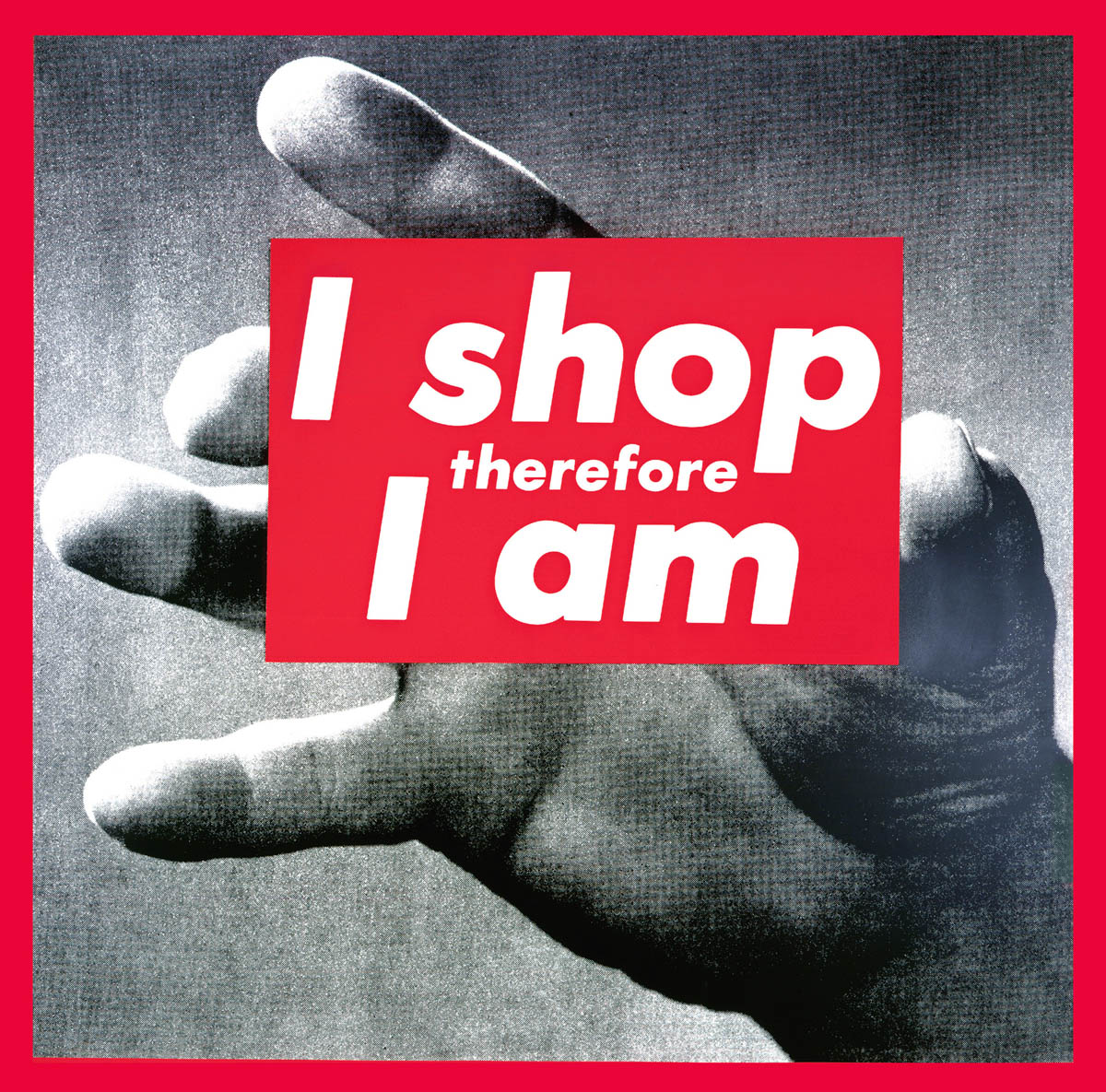Art & Commodity in the 1980s” Exhibit Opens at the Hirshhorn

The new Hirshhorn exhibit features art from the 1980s. Courtesy of Hirshhorn Museum.

The Hirshhorn Museum & Sculpture Garden is presenting a new exhibit, “Art and Commodity in the 80’s.” The exhibit explores the works of New York City artists during this transformative decade in which brands and labels became more coveted than products themselves, as art meshed with consumer culture. Also addressed by this exhibit are specific developments central to the decade such as the AIDS emergency, Black Monday, and Reaganomics, as exemplified through commercial art pieces.
When first entering the exhibit, visitors are greeted with a colorful, striped wall; on closer examination, it’s filled with repeated text. One of the striped texts is from the artist Jenny Hozler’s, Inflammatory Essays.
“Change is the basis of all history, the proof of vigor. The old is soiled and disgusting by nature. Stale food is repellent, monogamous love breeds contempt, senility cripples the government that is too powerful too long. Upheaval is desirable because fresh, untainted groups seize opportunity,” wrote Hozler in one of the excerpts.
This blurb refers to the 80’s obsession with the concept of “new” products: their quality being of less value than the pure fact that they are “new.” It could also be referencing the “new” concept of minimal government interference in the economy, as introduced by Reagan with “Reaganomics”.
As average people were beginning to spend more money, artists realized their potential market in selling was via “art-based thought and practice to non-art clients”. They also began to realize, as the American obsession with brands grew, that their own names, or even names they made up, could become brands. For example, in the early 80’s artist Ashley Bickerton introduced a brand name, “Susie”, that became a central and easily recognizable element in all his works. Art historian Abigail Solomon-Godeau claimed that “by choosing a phonetically casual, female first name, that whole agenda is thrown into some discursive light.” So, by incorporating this simple name into his work, Bickerton gained wide recognition, and “Susie” art began to be coveted purely because of the fact that it was “Susie.”
During this time period, artists also began to incorporate commercialized images into their work, using their ubiquity in order to communicate a message. An example of this can be seen through artist Julia Watchel’s work, specifically her painting entitled “Love Thing”.
“The greeting cards expressed ideas that often carried racist, sexist, and classist messages. I put a spotlight on how these images, which might usually be taken for granted, are not natural,” Watchel said. “By putting the two images of the objectified women next to each other, I was attempting to show how we are positioned as voyeurs to these images and perhaps become inconspicuously complicit in our gaze.”
During the 80’s the obsession with hygiene and contamination also grew, and as Hirshhorn wisely asserts, this is perhaps “bringing to light striking parallels between politics and cleanliness.” One example of this is Alan Belcher’s “$51.49”, in which he displays three bottles of Solo fabric softener, but replaces the labels with familiar 80’s buzzwords such as LOGO, COLA, and AIDS.
Ultimately this exhibit sheds much-needed light on a decade which encompassed a good deal of political, social, and artistic turmoil in America as well as on the world stage. The images presented were powerful and perhaps struck each Hirshhorn attendee in a different way.





